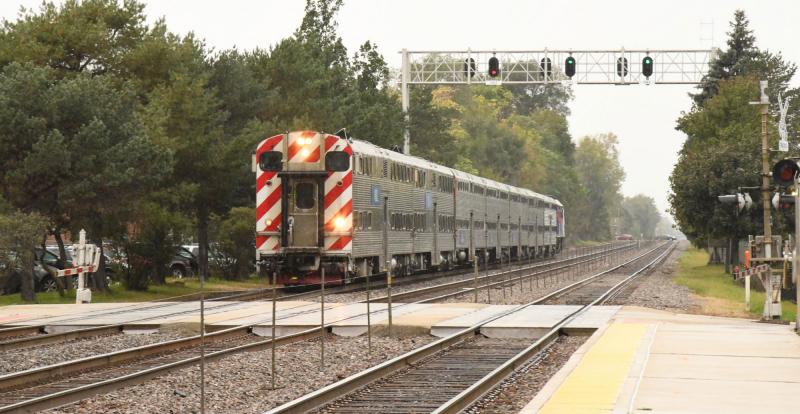
We often receive questions about service disruptions as they are happening and as follow-ups the next day. We understand why: service disruptions add extra stress to an already long work day, interrupt scheduled plans and precious time with family members and they are especially frustrating when our riders don’t know what is going on.
While every situation is different, we provided our riders with a look at what typically occurs during the most common service disruptions on this webpage. In all cases, it is the goal of Metra, BNSF Railway and Union Pacific Railroad to get our riders to their destinations as true to schedule as possible. All involved in restoring service work as quickly as possible to get trains moving again safely.
Why Do Service Disruptions Happen at All?
We’ve all been there: being stuck in the middle of a service disruption can feel like the whole world is working against you. It’s that drop-your-head-back-and-stare-at-the-ceiling feeling that makes you wonder why this still happens in this era where subterranean express tunnels and passenger trips to space seem possible. Many variables can disrupt normal operations, making it very difficult to completely avoid delays of some kind. These issues are timeless.
Every day, employees in the mechanical shops, train yards, and signal, engineering, and transportation departments make sure Metra operates safely and efficiently. However, as in all systems with complex, moving parts, issues can arise at any time, even in the middle of a scheduled trip. Events out of our control—such as extreme weather, fallen trees, fires adjacent to our tracks, and police activity on or near our tracks—cannot be predicted, but can affect your commute. When Metra learns of potential disruptions, such as a winter storm or a major planned event, employees across many departments prepare for any issue that may arise. Most frequently, though, train crews must deal with delays in the spur of the moment.
A lack of capital funding from the state of Illinois has resulted in deferred improvements and deferred investments into our rolling stock and infrastructure. Though trains are operated safely, the consequence of these deferments is less reliable service and less comfortable rides.
All of these factors, both anticipated and unexpected, contribute to delays experienced on board any train system, including Metra.
The Deal with Delay Times
When you are stuck on a train that is halted, it can be incredibly frustrating not knowing how long you will be there. In some situations, we’ll try to provide riders with a certain range of delay times. However, the exact length of most delays will be unknown. This is primarily because each situation is unique. For example, we cannot predict how long a mechanical failure will take to resolve—if it is resolvable on site—because it will depend on what failed and what parts and staff are needed to repair it. Similarly, if a freight train is blocking tracks or a crossing, it is the freight company’s responsibility to get its equipment back on the move. Though we communicate with our freight partners throughout a disruption, it is ultimately the freight company’s crews who resolve the issue and determine how long it takes.
Delay times are also unknown for any incidents involving injury, damage to rails or trains, or events requiring on-site employees to resolve, such as clogged switches. For example, if a truck strikes a railroad bridge or a vehicle was stuck on the tracks, a track inspector is required to report to the scene and make sure the rails are safe to operate over. Because the track inspector must drive to the scene, traffic will slow him or her down, especially during rush hours. Does the county coroner need to investigate a scene? He or she can be delayed if they are concluding a prior investigation, caught up in traffic or simply traveling a long distance. In these situations, train movement cannot resume until all required entities arrive and complete their duties.
How to Get Service Information
Metra works to provide updates regarding any service changes on a variety of channels for our customers. Metra’s GPS Center is our central alerts communications hub responsible for sending out emails, website updates, Twitter alerts and platform and onboard announcements to our riders. Once you create a My Metra account, you can sign up to receive alerts for your line and choose the window of time in which you want to receive them.
For those on Twitter, each of Metra’s 11 rail lines has a unique Twitter handle for line-specific service information. They are as follows: @metraBNSF, @metraUPNW, @metraUPN, @metraUPW, @metraMDN, @metraMDW, @metraMED, @metraRID, @metraSWS, @metraHC, and @metraNCS.
Detailed information can be found on our website under the Service Alerts section on the metra.com homepage for each rail line and for systemwide alerts.